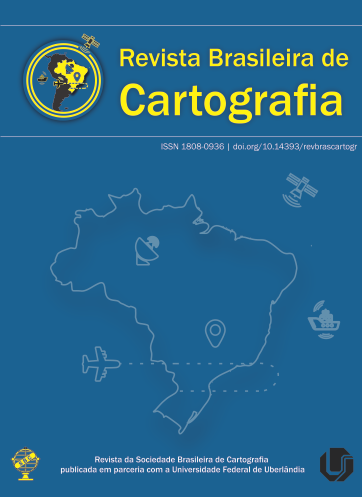Evaluation of Three-Dimensional Low-Cost Scanners for Reproduction of Cartographic Products
Main Article Content
Abstract
In order to make three-dimensional modeling more accessible within the scope of Cartography and encourage their practice, this research addressed the use of low-cost and portable three-dimensional scanners for generation of cartographic products, for the purposes of documentation, reproduction or representation of virtual models. As this practice is still little explored in Brazil, this research presents a specific methodology to evaluate which of these scanners is the best in terms of cost-benefit. Three three-dimensional scanners were evaluated: the 3D Scanner Pro 1.0, the Scanner 3D Sense, and the MakerBot Digitizer Desktop 3D Scanner. Six prototypes were modeled, printed by a 3D printer, and scanned by each of these three three-dimensional scanners. Three evaluation parameters were defined: the technical specification, the user experience and the statistical analysis. Three variables were considered to evaluate the technical specifications: resolution, mobility and cost. The ease of use and scanning time were considered to evaluate the user experience. And the prototypes measurements were used to evaluate the statistical analysis, compared to the original measurement of them. The obtained results presented similar values for the 3D Scanner Pro 1.0 and the MakerBot Digitizer Desktop 3D Scanner. Due to the 3D Scanner Pro 1.0 has a lower cost than the MakerBot Digitizer Desktop 3D Scanner, the former was chosen as the best cost-benefit scanner. To complement this research and to verify the practical potential of this technology, two new features were chosen, scanned with the selected scanner and printed by a 3D printer. The results were satisfactory and, due to that, they encourage the use of this technology as a means of generating 3D cartographic products.
Downloads
Metrics
Article Details
Authors who publish in this journal agree to the following terms:
- Authors retain copyright and grant the journal right of first publication with the work simultaneously licensed under a Creative Commons Attribution License that allows others to share the work with an acknowledgment of the work's authorship and initial publication in this journal.
- Authors can enter into separate, additional contractual arrangements for the non-exclusive distribution of the journal's published version of the work (e.g., post it to an institutional repository or publish it in a book), with an acknowledgment of its initial publication in this journal.
- Authors are permitted and encouraged to post their work online (e.g., in institutional repositories or on their website) before and during the submission process, as it can lead to productive exchanges, as well as earlier and greater citation of published work (see "The Effect of Open Access").





